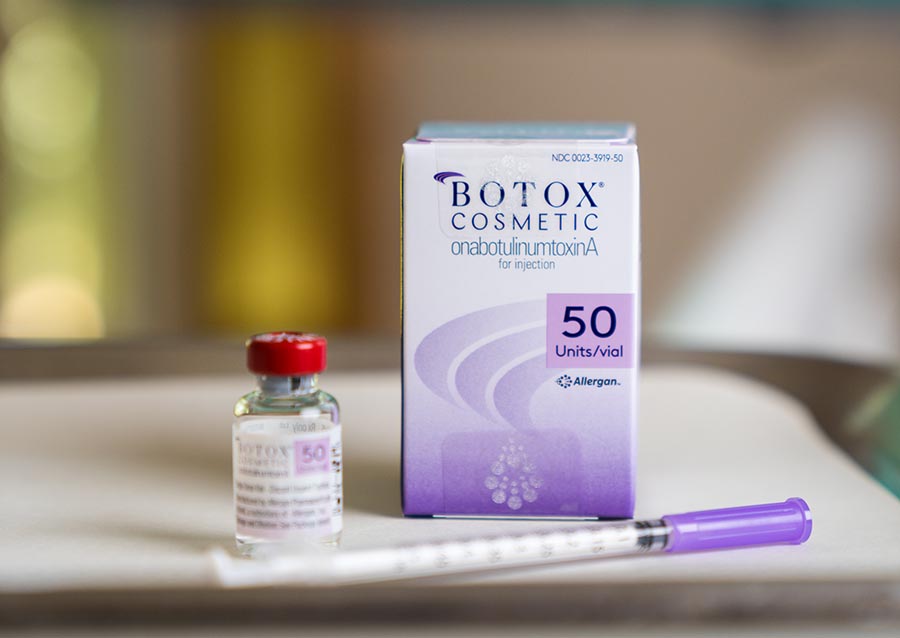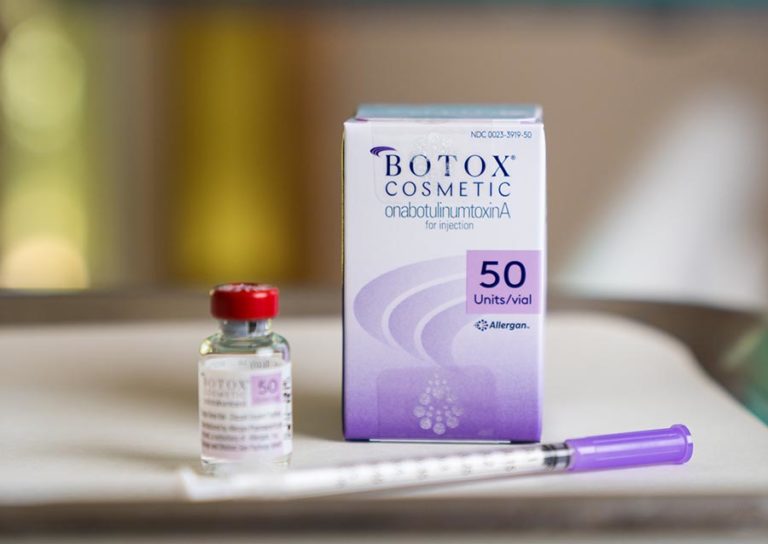First approved by the FDA in 2000 for cosmetic use, Botox is now approved as a therapeutic treatment option for millions of people suffering from dental-related conditions like jaw pain from TMJ and bruxism (clenching and grinding). Botox, a medical-grade drug produced from the Botulinum toxin, has been proven safe and effective in blocking the nerve impulses that cause muscle clenching, wrinkles, and tension, giving dentists another tool in their kit for helping patients reduce or even eliminate pain.

How does Botox work?
Botox is administered via injection into the muscles just under the skin, and works by blocking nerve receptors to the muscles, helping them relax without actually blocking the neurons that are actively receiving messages from your body. This means that, even though the muscles are relaxing, there is still feeling in the treatment area. Preventing the release of neurotransmitters (specifically acetylcholine) also helps keep the muscle cells from stiffening and contracting for several weeks to months or even longer after a therapeutic Botox treatment.
How is therapeutic Botox used for dental conditions?
Dentists are uniquely suited for administering therapeutic Botox, and the treatment is often an effective complement to other dental treatments or procedures like nightguards. Not only are dentists trained in the muscles, soft tissue, and bony structures of the mouth, jaw, and face, but they are also familiar with facial proportions and aesthetics. They also have extensive experience and skill in performing injections in various areas around the face and mouth.
With therapeutic Botox, dentists can alleviate dental conditions like:
Bruxism, or teeth clenching and grinding caused by tension or stress.
Clenching and grinding can wreak havoc on the teeth and jaws, wearing down enamel, damaging teeth, and straining the jaw muscles. Bruxism can be difficult to stop because it happens unconsciously, usually while you are sleeping and causing a sore jaw and tight muscles in the morning.
Bruxism is also difficult to treat because the constant clenching and grinding strengthens the large chewing muscles in the jaw, making them bigger, stronger, and less able to relax like they should.
By relaxing those large muscles and allowing them to weaken slightly, therapeutic Botox injections reduce tension in the jaw so the muscles can rest.
Temporomandibular Joint Disorders (TMJ or TMD)
TMD is an umbrella term for problems in the muscles and joints involved in the jaw’s complex movements like chewing and speaking.
Similar to bruxism, TMDs develop as a result of overstimulation of the chewing muscles, but they can also develop as a result of jaw misalignment or excessive stress or tension “stored” in the jaw.
TMD can cause myriad problems in the jaw, teeth, mouth, neck, shoulders, head, and even the ears. People suffering from TMD may also notice noises like popping and clicking when they open their jaw, or even difficulty opening and closing the jaw in the first place.
As with bruxism, therapeutic Botox can help relax the muscles in the jaw so that they can rest in their proper alignment and release tension.
“Gummy smiles,” or Excessive Gingival Display
Gummy smiles occur when there is more gum than typical showing while smiling, making teeth appear smaller than normal.
While gummy smiles are not necessarily a medical condition, they can cause strain or fatigue in the other facial muscles. The increased exposure of your gums could also put you at risk for inflamed or painful gums, gum disease, dry mouth, and bad breath.
If a gummy smile is the result of hyperactive muscles that are elevating or raising the upper lip, it can often be corrected with therapeutic Botox injections to both sides of the nostril and in the nose to mouth lines. The Botox will weaken the muscles’ activity and allow them to relax.
In addition to treating TMJ, bruxism, dry mouth, and gummy smiles, therapeutic Botox can also be used to:
- Reduce the intensity and frequency of migraines
- Minimize the appearance of forehead wrinkles, frown lines, and “crow’s feet” or “laugh lines” on the outer edges of the eyes
- Tighten sagging skin under the eyes
- Control excessive sweating in the palms or underarms
- Calm muscle spasms
What is a therapeutic Botox appointment like?
Your therapeutic Botox treatment will start with a consultation. The doctor will discuss your areas of concern, the procedure, and a recommended treatment plan and dosage, as well as the expected results.
During the appointment itself–which usually lasts between 10-15 minutes–the doctor will administer the appropriate units of therapeutic Botox using a fine gauge needle that produces only mild discomfort, similar to a pinch.
Therapeutic Botox at Norman Smile Center
Drs. Campbell and Sparks at Norman Smile Center are proud to offer Botox as both a cosmetic and medical treatment. Whether you suffer from TMD or bruxism, or are simply unhappy with the appearance of fine lines and wrinkles, we can help give you a smile that is both beautiful and healthy.
It’s never too late to live without the pain of bruxism or TMD, and it’s never too late to have the smile you’ve always wanted. Call 405-329-6603 today to schedule a consultation with Dr. Campbell or Dr. Sparks and find out if Botox is right for you. You can also fill out our convenient contact form here.

